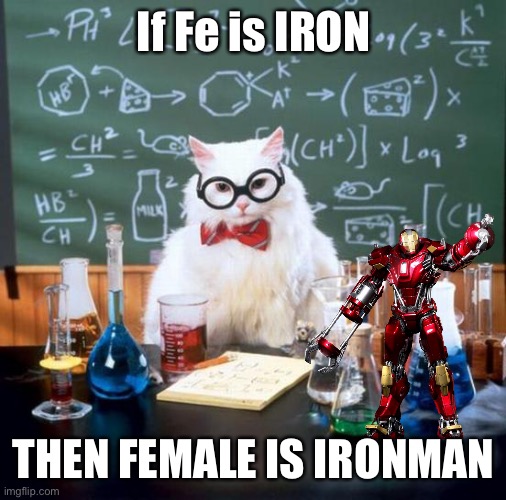The main focus of your hydration and fueling strategy for endurance sport should be ‘The Three Levers’ of carbohydrate, fluid and sodium. They’re the fundamentals of any effective race nutrition plan.
That being said, there is far more to the topic of good day-to-day nutrition than just these three elements. Making sure that your diet provides you with the right balance of all of the macro and micronutrients you need is critical for good overall health and performance...
Why is iron important for athletes?
Regardless of whether you’re an athlete or not, iron is an important micronutrient. It’s needed to make haemoglobin and myoglobin, both of which help transport oxygen from the lungs to the muscles and the rest of your body. Without enough of it, you might notice extra tiredness and shortness of breath.
Ferritin is a protein in cells that stores iron, and a measurement of your level of ferritin is an indirect way of quantifying iron levels in your body. The normal range for ferritin levels is pretty broad, but for the general population ~15-30 μg indicates low stores, while less than 15 μg indicates empty stores. Low levels could mean you’re suffering from iron deficiency anaemia (i.e. insufficient iron to produce enough red blood cells).
For athletes, anything under 50 μg could be considered low. This is because of the uptick in production of red blood cells stimulated by the demands of training, as well as tissue remodelling and muscle hypertrophy (increase in muscle size) requiring iron to chip in and help produce new tissues and blood cells.
Iron is ultra important
Runners need to be particularly aware of iron levels because their bodies’ experience the general wear-and-tear of being an athlete, and they’re also impacted by “foot strike hemolysis." That’s a fancy way to say the impact forces of your foot (specifically the heel) hitting the ground literally breaks down red blood cells, releasing iron into the blood plasma and potentially contributing to anaemia.
Compared to sedentary controls, runners’ red blood cells have an approximately 40% shorter lifespan. The data is mixed on whether the changes from footstrike hemolysis are clinically significant or not. However, since foot strike isn’t the only way hemolysis can occur during exercise, the overall topic of iron deficiency anaemia is still worth being aware of.
Factoring in the sheer time ultrarunners spend running (which is basically time spent destroying red blood cells day after day), the iron demands are significantly increased. This is certainly not to say that all – or even most – ultrarunners will have iron deficiency anaemia, but the nature of their sport may increase the risk.
Two other mechanical factors that may directly contribute to iron loss (aka exercise-induced hemolysis) are repeated muscle contractions and internal organ vasoconstriction (i.e. the narrowing (constriction) of blood vessels by small muscles in their walls). On the metabolic side, things like hyperthermia, dehydration, and lactic acidosis may add to the effect.
A paper by O’Toole and colleagues from 1988 suggested that the amount of hemolysis is tied to race distance for triathletes. This aligns with the idea of increased demands (i.e. a longer race distance) meaning more cause for iron “awareness.” I guess you really can’t take the “iron” out of IRONMAN…
Speaking of iron and men…

If athletes already have risk factors for iron deficiency, female athletes should really be on their game. Menstruation increases iron losses, especially if the athlete experiences heavy bleeding.
How much iron do you need?
The Recommended Daily Allowance (RDA) of iron for the general population in the US is 18mg for women and 8mg for men. (In the UK, it’s 14.8mg and 8.7mg, respectively.) For pregnant women, it’s 27mg, but there isn’t an official iron recommendation for athletes. Some suggest that specifically female endurance athletes might need 70% more than the standard 18mg intake, though.
But, if you’re already placing a next-day order for iron supplements, hold that thought. There’s a lot you can do with your dietary intake first.
Do you need iron supplements?
A study by Lyle et al. (1992) highlighted a diet rich in meat protein better protected iron status than an iron supplement. Great news for meat lovers, but our veggie friends might need a little extra help. That’s because dietary iron comes in two different sources – heme iron (animal products) and non-heme iron (plant sources). The latter is less bioavailable (bioavailability refers to how easily a nutrient can be absorbed by the body), which is often given credit for findings of lower iron status in vegetarians compared to their steakhouse counterparts.
Don't worry, we’re not on a mission to convert the veggies. Instead, the recommended dietary intake for vegetarians is 1.8x higher (32mg for women, 14mg for men). If you fall into that group, load up on leafy greens, beans, lentils, peas, soy products, seeds.
Pro tip: pair iron-rich foods with vitamin C (red bell peppers, guava, kiwi) for better absorption, but keep them away from tannins (tea, coffee) and calcium (milk, yoghurt) as these can hinder uptake.
Most importantly…
Be aware of any signs and symptoms of unexplained fatigue or weakness, shortness of breath, heart palpitations, and ask your doctor for a simple blood test.
Iron supplementation, or a change in day-to-day diet, may be a viable strategy to improve your performance and overall health. There are no guarantees that you’ll get a powered armour suit or become as cool as Robert Downey Jr though…